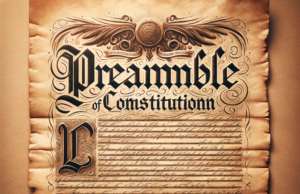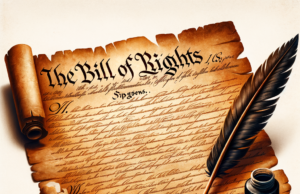Unmasking the Truth: The Alarming State of Election Integrity Today

In recent years, the integrity of elections has emerged as a focal point of national discourse, raising concerns among citizens, lawmakers, and experts alike. The sanctity of the electoral process, a cornerstone of democratic governance, is increasingly perceived to be under threat from various angles, including misinformation, technological vulnerabilities, and legislative challenges. This article aims to explore the current state of election integrity, examining its historical evolution, contemporary threats, the role of technology, policy responses, and strategies for ensuring a trustworthy electoral process in the future.
Understanding Election Integrity: A Crucial Pillar of Democracy in Crisis
Election integrity refers to the assurance that elections are conducted fairly, transparently, and free from manipulation or fraud. It encompasses a range of factors, including voter registration processes, ballot security, and the accurate counting of votes. In a democratic society, the legitimacy of elected officials hinges on the public’s trust in the electoral process. However, recent events have led to a crisis of confidence among voters, with many questioning the reliability of election outcomes. This erosion of trust poses a significant threat to democracy, as it can lead to voter apathy, civil unrest, and a diminished willingness to engage in the democratic process.
The Historical Context: How Election Integrity Has Evolved Over the Decades
The concept of election integrity has undergone significant transformation since the inception of democratic governance. In the early 20th century, issues such as voter suppression, gerrymandering, and ballot tampering were rampant, prompting reforms like the Voting Rights Act of 1965 in the United States. Over the decades, advancements in technology and increased awareness of civil rights have led to improvements in election processes. However, each advancement has also introduced new challenges, such as the rise of electronic voting machines and the internet, which have created vulnerabilities that could be exploited. Understanding this historical context is essential for recognizing the ongoing challenges to election integrity today.
Current Threats to Election Integrity: Analyzing Recent Incidents and Challenges
Recent elections have highlighted a myriad of threats to election integrity, ranging from foreign interference to domestic misinformation campaigns. The 2020 U.S. presidential election, for instance, was marred by widespread claims of fraud, despite a lack of evidence. These claims were fueled by social media platforms that amplified misinformation, creating a polarized environment where trust in electoral outcomes was severely compromised. Additionally, incidents of cyberattacks targeting election infrastructure have raised alarms about the potential for manipulation of voting systems. As these threats evolve, it becomes increasingly imperative to address them head-on to safeguard the democratic process.
The Role of Technology: Balancing Innovation and Security in Voting Systems
Technology plays a dual role in the realm of election integrity. On one hand, innovations such as electronic voting machines and online voter registration have streamlined the electoral process, making it more accessible to a broader demographic. On the other hand, these advancements have also introduced vulnerabilities that can be exploited by malicious actors. Cybersecurity experts warn that without robust security measures, voting systems could be susceptible to hacking and other forms of interference. Striking a balance between leveraging technology for efficiency and ensuring the security of electoral systems is crucial for maintaining public confidence in the integrity of elections.
Policy Responses: Legislative Measures to Strengthen Election Integrity Nationwide
In response to growing concerns about election integrity, lawmakers across the country have proposed a variety of legislative measures aimed at strengthening the electoral process. These measures include implementing stricter voter ID laws, enhancing cybersecurity protocols for voting systems, and increasing transparency in campaign financing. Some states have also adopted measures to expand access to voting, such as mail-in ballots and early voting, which can help mitigate the impact of misinformation and voter suppression. However, the effectiveness of these policies often hinges on bipartisan support and public trust, making it essential for legislators to engage with constituents and address their concerns.
Moving Forward: Strategies for Ensuring Trust and Transparency in Future Elections
To restore faith in the electoral process, a multifaceted approach is necessary. First, enhancing public education about the electoral process can empower voters and dispel myths surrounding election integrity. Additionally, fostering collaboration between government agencies, technology companies, and civil society organizations can help develop and implement best practices for secure voting systems. Regular audits of election results, transparent reporting of voting data, and robust cybersecurity measures are also vital in ensuring accountability. Ultimately, a commitment to transparency and inclusivity will be essential in rebuilding trust and ensuring that future elections reflect the will of the people.
As the landscape of election integrity continues to evolve, it is imperative for all stakeholders—citizens, lawmakers, and technology providers—to work collaboratively to address the challenges at hand. By understanding the historical context, recognizing current threats, and implementing effective policy responses, we can safeguard the democratic process for future generations. Ensuring the integrity of elections is not merely a political obligation; it is a fundamental duty to uphold the principles of democracy and foster a society where every vote truly counts.











